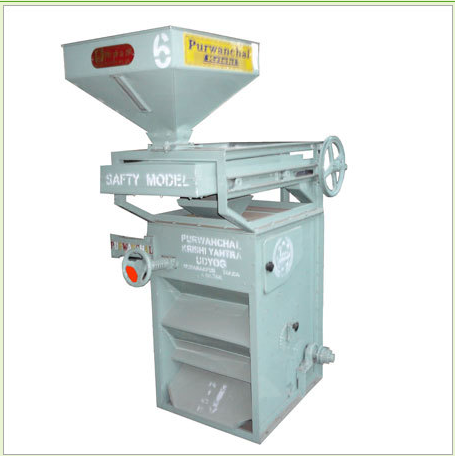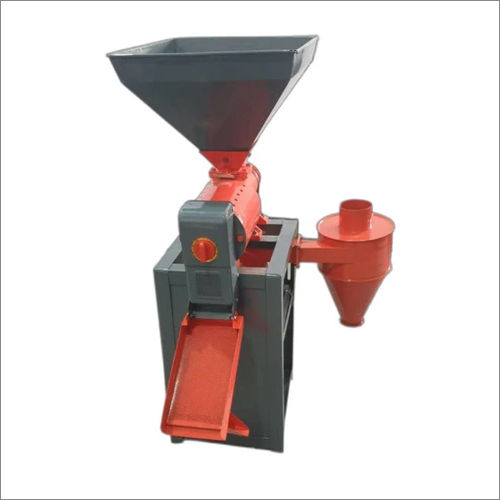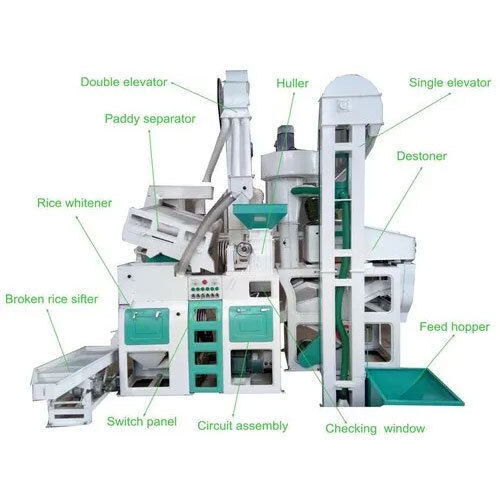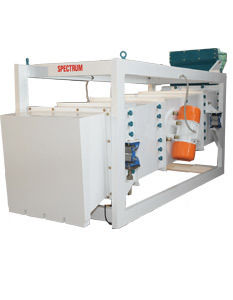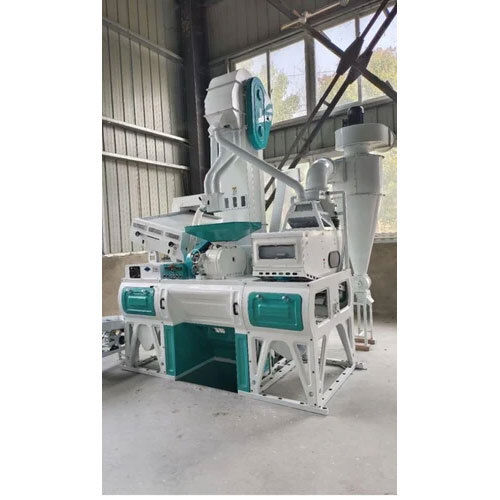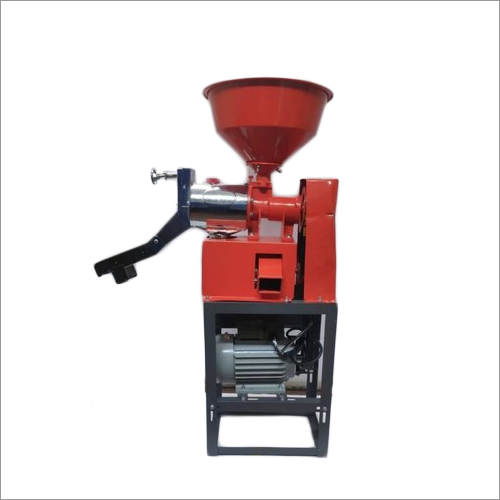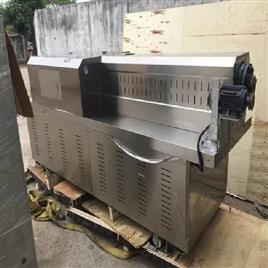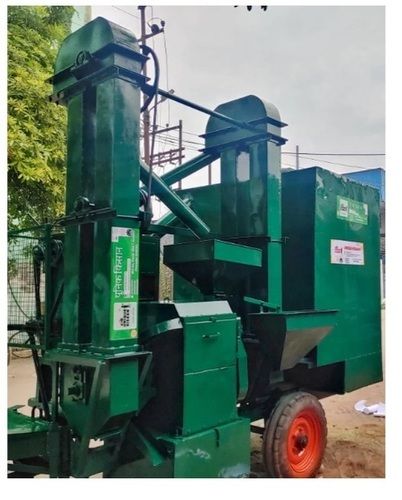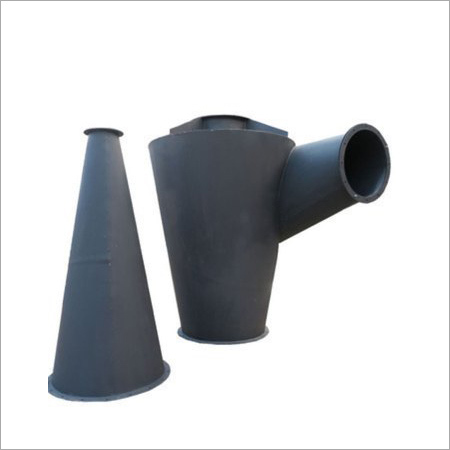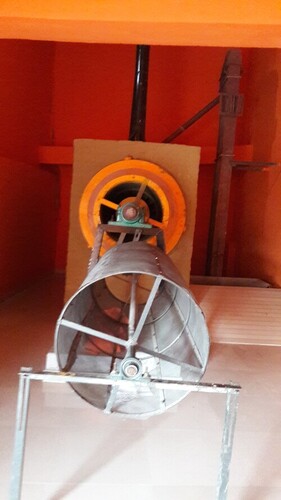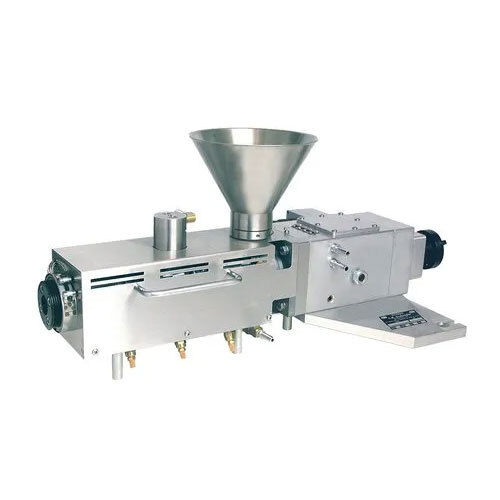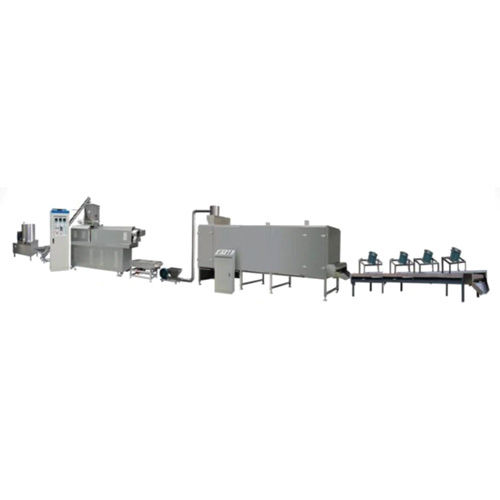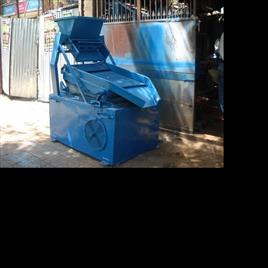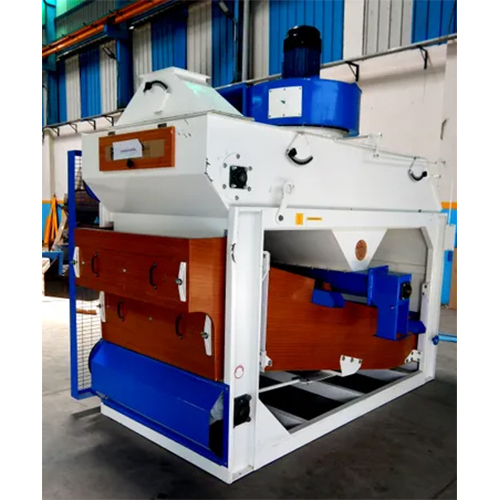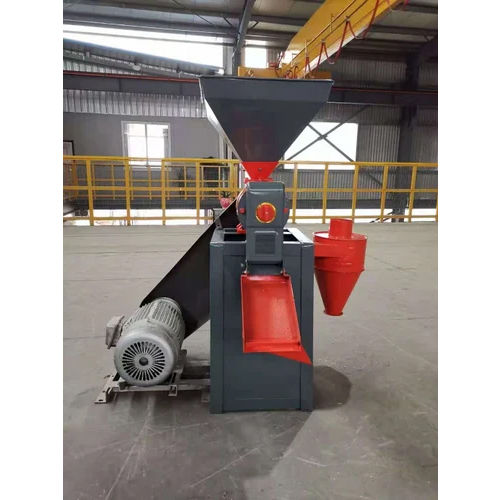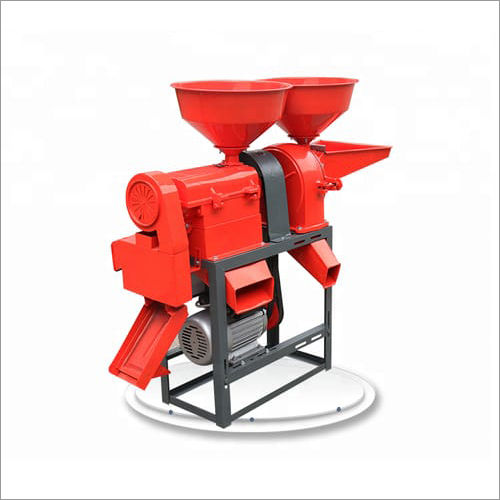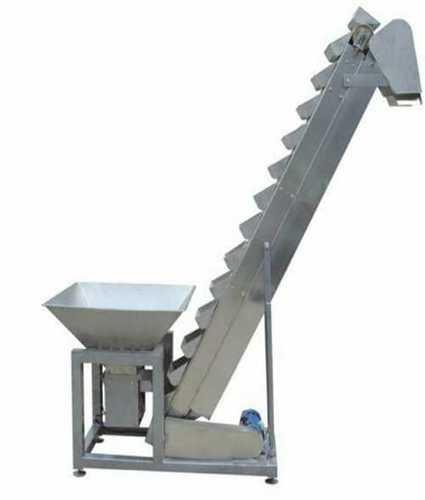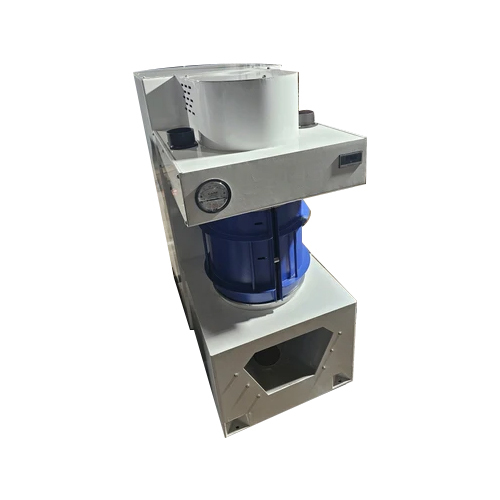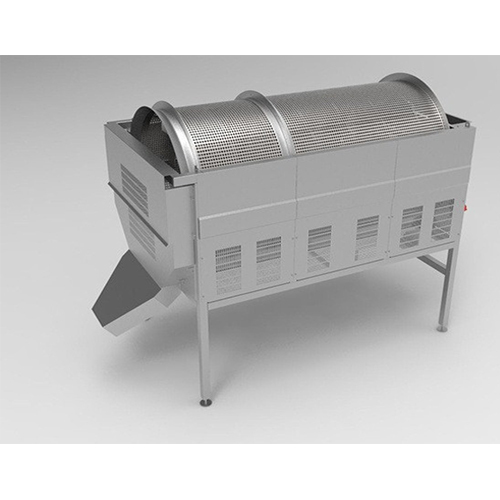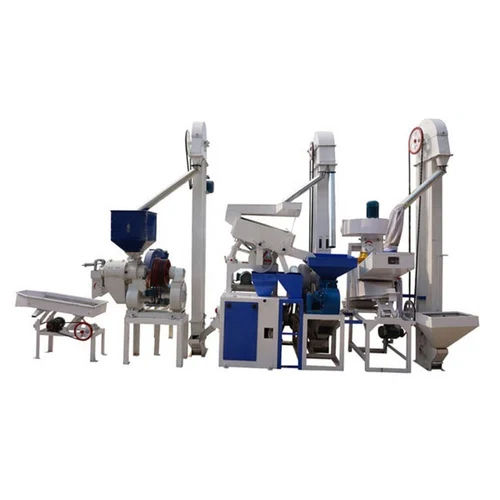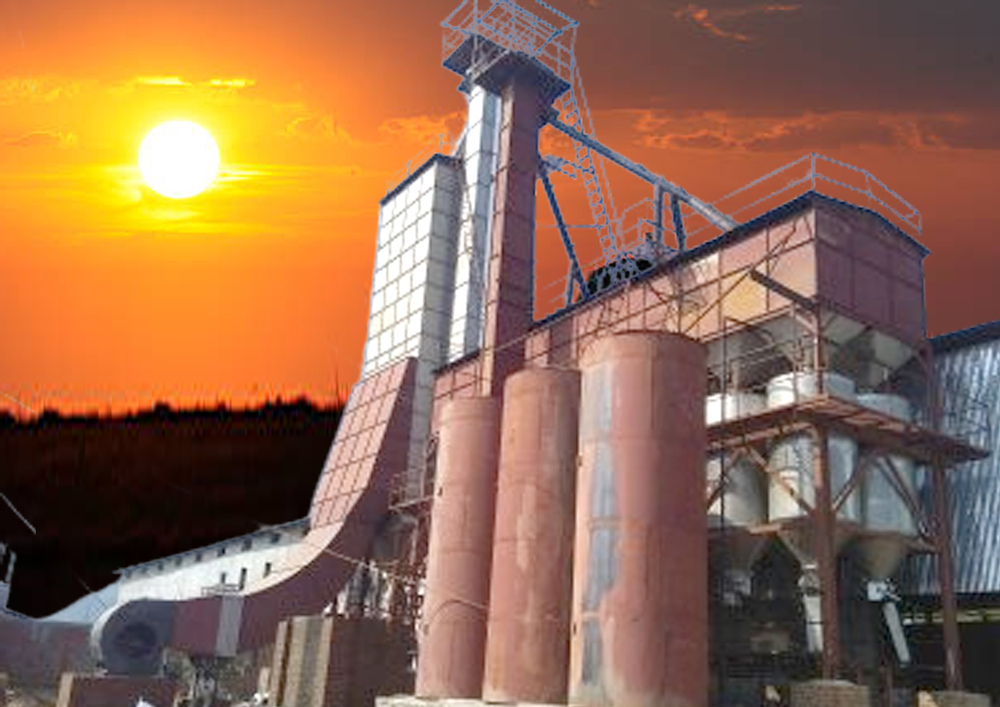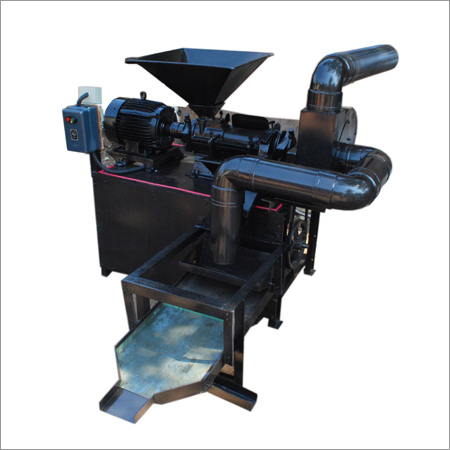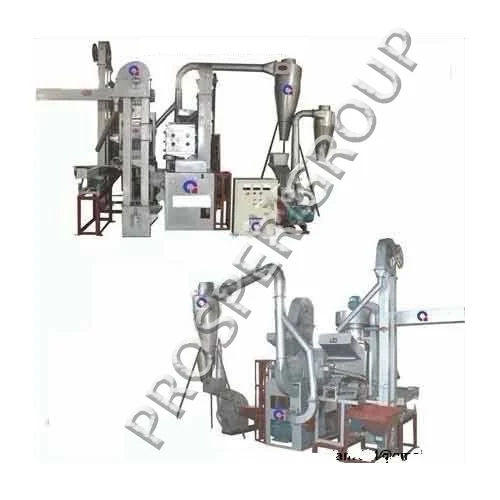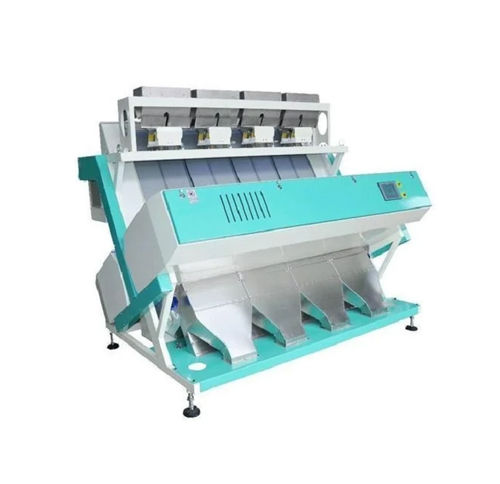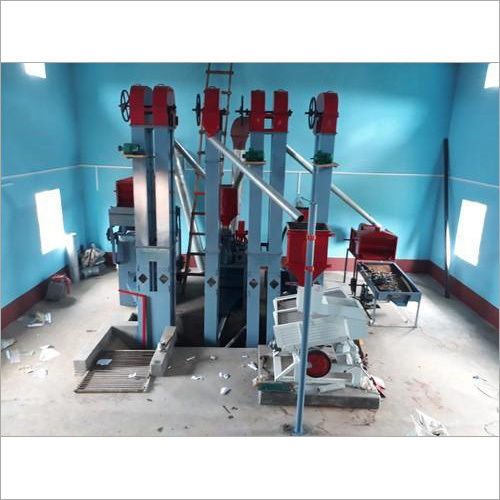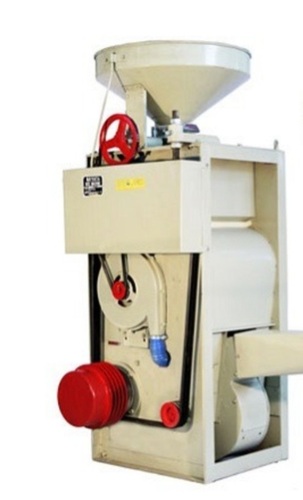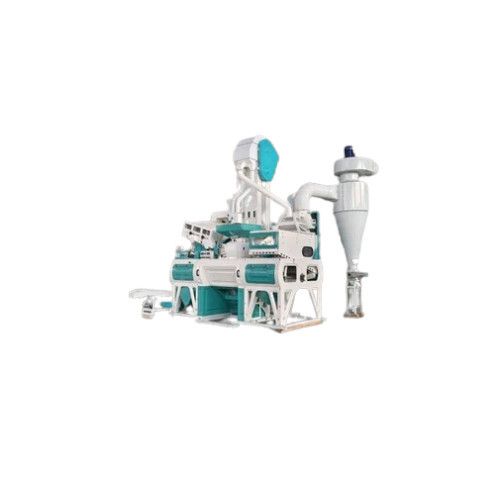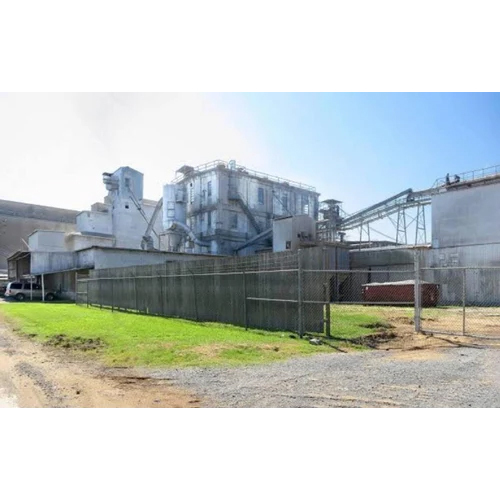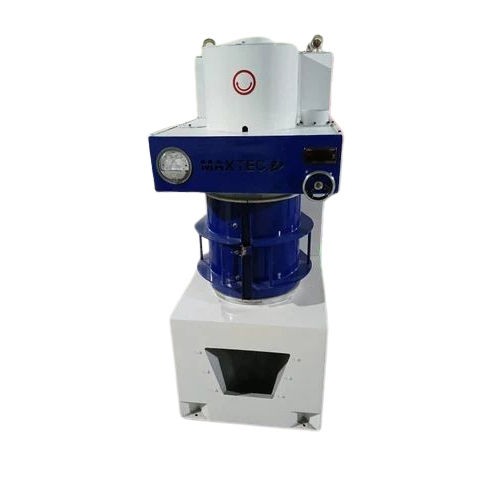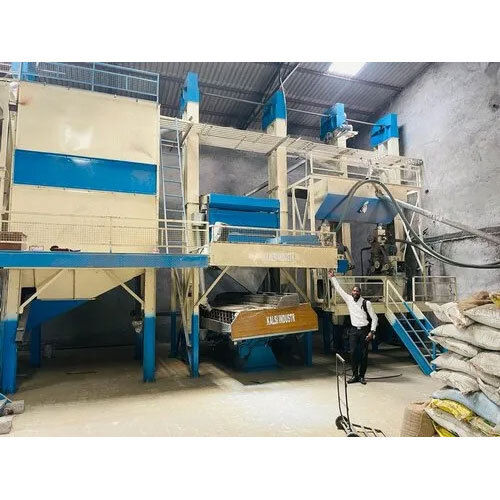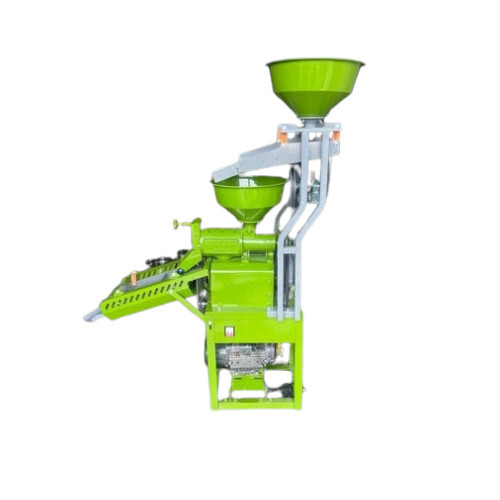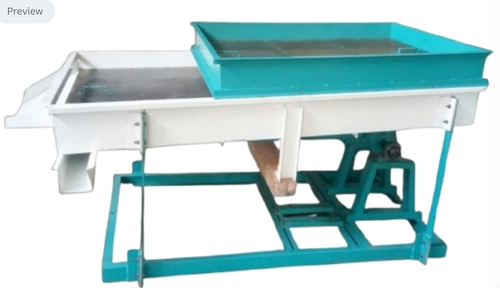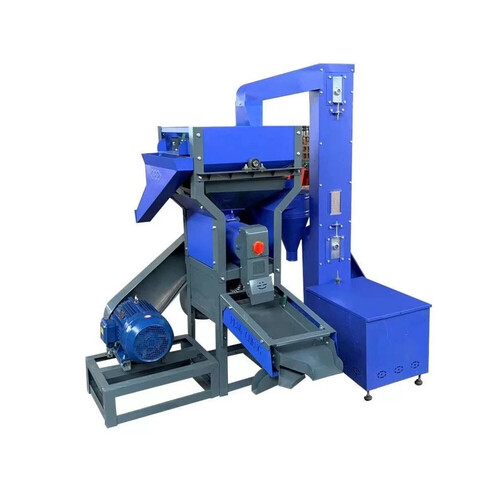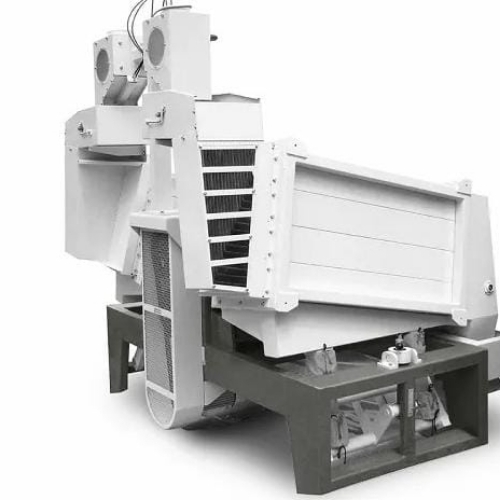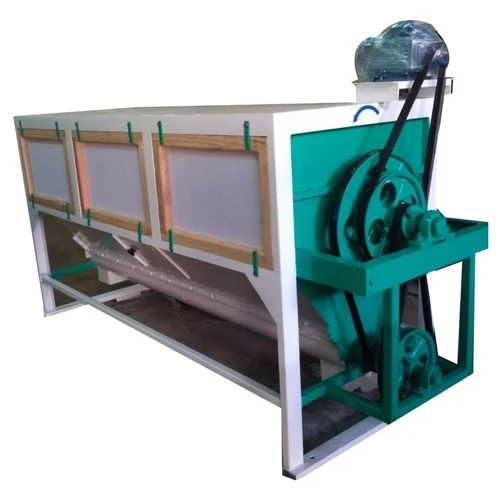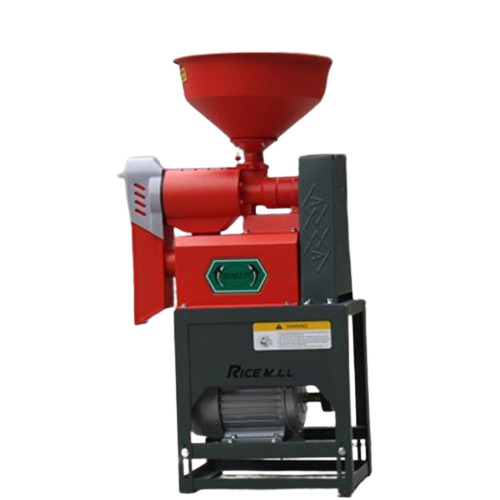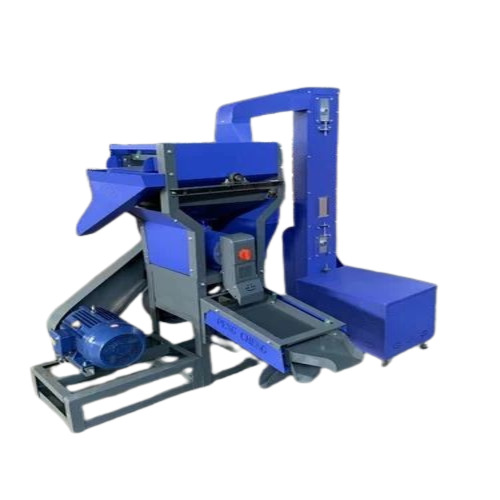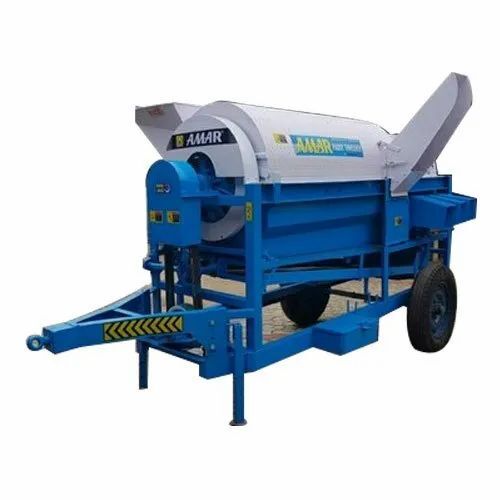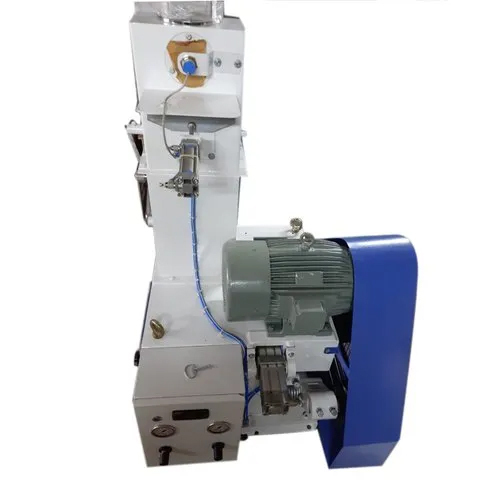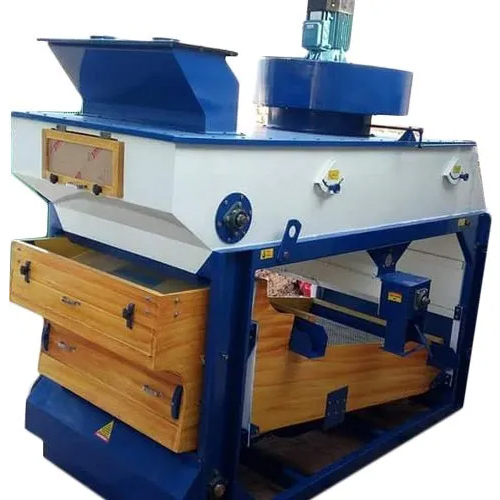Rice Mill Machinery
(1398 products)Semi-Automatic Sheller Upper Cleaner
Price Trend: 25000150000.00 - 100000.00 INR/Unit
MOQ1 Unit/Units
TypeSheller Upper Cleaner
MaterialIron
Capacity700-800 Kg/hr
ComputerizedNo
Automatic GradeSemi-Automatic
Sorting EfficiencyHigh
Semi-Automatic 7.5 Hp Blower Rice Mill
Price: 80000 INR/Piece
MOQ1 Piece/Pieces
Type7.5 HP Blower Rice Mill
MaterialStainless steel
ComputerizedNo
Automatic GradeSemi-Automatic
Weight65 Kilograms (kg)
Dimension (L*W*H)1.5 x 1.5 x 4 Foot (ft)
Motorised Slide Gate - Automatic Grade: Automatic
MOQ1 Set/Sets
TypeMotorised Slide Gate
MaterialSS
ComputerizedNo
Automatic GradeAutomatic
Warrantyyes
Rice Mill Plant - Automatic Grade: Automatic
Price: 850000 INR/Piece
MOQ1 Piece/Pieces
TypeRice Mill Plant
MaterialMild Steel
ComputerizedNo
Automatic GradeAutomatic
Warranty1 Year
Vinglob Greentech I Private Limited
Ahmedabad
Rice Vibro Grader - Mild Steel, 1 T/hr Capacity | Automatic Grading, Efficient Vibration Mechanism, Adjustable Levels, Low Power Consumption
Price: 700000 INR/Unit
MOQ1 Unit/Units
TypeRice Vibro Grader
MaterialMild Steel
Capacity1 T/hr
ComputerizedYes
Automatic GradeAutomatic
Weight350 Kilograms (kg)
1.5 Ton/Hr. Combined Rice Mill - Automatic Grade: Automatic
Price: 660000 INR/Piece
MOQ1 Piece/Pieces
Type1.5 ton-hr Combined Rice Mill
ComputerizedNo
Automatic GradeAutomatic
Size3158x3966x 3299
Weight1300 Kilograms (kg)
Warranty7 to 12 months
Emtex Machinery Private Limited
New Delhi
Semi-Automatic Mini Rice Mill Machine
Price: 20000 INR/Unit
MOQ1 Unit/Units
TypeRice Mill Machine
MaterialIron
ComputerizedNo
Capacity120-140 Kg/hr
Automatic GradeSemi-Automatic
Sorting EfficiencyHigh
Vinspire Agrotech (i) Private Limited
Ahmedabad
Automatic 40 KW Machine Power Frk Fortified Rice Extruder
Price: 1200000 INR/Piece
MOQ1 Piece/Pieces
TypeAutomatic 40 KW Machine Power Frk Fortified Rice Extruder
Automatic GradeAutomatic
Weight2000 Kilograms (kg)
Heavy Duty Automatic Rice Mill Machinery from Paddy Cleaning to Rice Packing
TypeRice Mill Machinery
MaterialSteel
Automatic GradeAutomatic
Airlock Cyclone - Capacity: 4-8 T/Hr
Price: 250000.00 INR/Piece
MOQ1 Piece/Pieces, Piece/Pieces, Piece/Pieces
TypeAirlock Cyclone
MaterialStainless Steel
ComputerizedYes
Capacity4-8 T/hr
Muri Making Machine - Stainless Steel, 40 kg Capacity/2 Ton Hour, Semi-Automatic Operation - Precision Rotary Cutting Unit, Versatile Size & Thickness Production
Price: 145000.0 INR/Piece
MOQ1 Piece/Pieces, Piece/Pieces, Piece/Pieces
TypeMuri Maker
MaterialStainless steel
ComputerizedNo
Automatic GradeAutomatic
Frk Extruder - Automatic Grade: Automatic
Price: 6900000 INR/Piece
MOQ1 Piece/Pieces
TypeFRK Extruder
MaterialSS
Capacity200 Kg/hr
ComputerizedNo
Automatic GradeAutomatic
Warranty1 Year
Automatic Fortified Rice Making Machine Capacity: 200-600 Kg/Hr
MOQ1 Unit/Units
TypeAutomatic Fortified Rice Making Machine
MaterialMetal
Capacity200-600 Kg/hr
Automatic GradeAutomatic
Sorting EfficiencyHigh
WarrantyYes
Grain Cleaner - Automatic Grade: Automatic
Price: 350000 INR/Unit
MOQ1 Unit/Units
MaterialMild Steel
ComputerizedYes
Capacity2-35 T/hr
Automatic GradeAutomatic
Warranty1 Year
Grain & Pulses Engineers Pvt. Ltd.
Faridabad
Automatic Three Phase Rice Mill Machine
Price: 85000 INR/Unit
MOQ1 Unit/Units
TypeThree Phase Rice Mill Machine
MaterialMetal
ComputerizedNo
Automatic GradeAutomatic
Weight120 Kilograms (kg)
Warranty1 Year
Automatic Industrial Combined Mini Rice Mill Machine
Price: 40000 INR/Unit
MOQ1 Unit/Units
TypeRice Mill Machine
MaterialMetal
ComputerizedNo
Automatic GradeAutomatic
Debadrita Enterprise
Durgapur
 Trusted Seller
Trusted Seller4 Years
Automatic Rice Mill Bucket Elevator
Price: 300000 INR/Set
MOQ1 Set/Sets
TypeRice Mill Bucket Elevator
MaterialIron
ComputerizedNo
Automatic GradeAutomatic
Warranty1 Year
Vertical Rice Whitener - Automatic Grade: Automatic
Price: 560000 INR/Unit
MOQ1 Unit/Units
TypeRice Whitener
MaterialMS
ComputerizedNo
Automatic GradeAutomatic
SizeStandard
Warranty1 Year
Pea Grader Machine - Automatic Grade: Semi-Automatic
MOQ1 Unit/Units
MaterialStainless Steel
ComputerizedNo
Automatic GradeSemi-Automatic
Sorting Efficiency90%-95%
Warranty5 Years
Krushi Yantra Agrotech (i) Pvt. Ltd.
Ahmedabad
Automatic Rice Mill Machine - Automatic Grade: Manual
MOQ1 Unit/Units
TypeAutomatic Rice Mill Machine
MaterialSS
ComputerizedNo
Automatic GradeManual
SizeCustomerized
WarrantyYes
Gyantosh Fabricators Private Limited
Indore
Ricetech Machinery India Private Limited
Hyderabad
 Trusted Seller
Trusted Seller17 Years
Rice Mill Machinery - Durable Steel Construction | High Efficiency Grain Processing, Versatile Design for Increased Productivity
Price Trend: 40000.00 - 125000.00 INR/Set
MOQ1 Set/Sets
Supply Ability1 Per Day
Delivery Time1 Days
Patkar Engineers And Exports Private Limited
Kolhapur
Automatic Mini Compact Rice Mill Machine
Price: 800000 INR/Unit
MOQ1 Unit/Units
TypeMini Compact Rice Mill Machine
MaterialSS
Capacity600-800 KG/H Kg/hr
Automatic GradeAutomatic
Prosper Choice Import Export
Greater Noida
 Trusted Seller
Trusted Seller5 Years
Automatic Rice Colour Sorter
Price: 1250000 INR/Unit
MOQ1 Unit/Units
TypeRice Colour Sorter
MaterialMetal
Automatic GradeAutomatic
Sorting EfficiencyHigh
WarrantyYes
Easy to Operate Rice Polisher
Product DescriptionEasy to Operate\015\012Heavy Duty/ Sturdy\015\012Simple and Trouble Free Mechanism\015\012Sieve Attached for Bran Collection with Drive Control Facility.\015\012High Capacity with Low Power Consumption
Rice Mill Plants - Automatic Grade: Automatic
Price: 880000.00 INR/Unit
MOQ1 Unit/Units
TypeRice Mill Plants
MaterialMild Steel
ComputerizedNo
Capacity10-20 Ton/day
Automatic GradeAutomatic
SizeStandard
Latest From Rice Mill Machinery
Explore More Cities
Ready To Ship Rice Mill Machinery
Know About Rice Mill Machinery: Types, Processing & Operation Cost
Rice mills are important pieces of machinery used for checking the production of rice. Rice mills are also used for the whitening of brown rice. The machine works by subjecting the brown rice to friction caused by the sand or iron roller inside the grinding cavity of the machine and the friction removes the chaff from the brown rice. Among them, the iron roller improves the rice's brightness and the emery roller in the rice milling cavity improves the rice's whiteness. Brown rice is milled into white rice with varying degrees of precision by adjusting the quantity and milling time. The rate at which rice is polished and the quality of the rice milling it produces are strongly related. The milling of rice always includes the use of a rice polisher.
Preparation Work before Using the Rice Mill
Before using the rice milling equipment, users should be careful to read and understand the instructions provided in the manual thoroughly. Some details of the machine require careful consideration like the duration of the milling process as an understanding of this detail is important to determine the whiteness and quality of the rice.
Recognize and be comfortable with the grinding wheel and cavity. Each rice mill machine mills the same amount of brown rice, but it takes somewhat longer to do it with the same level of precision. To achieve the finest rice milling impact, we must investigate and ascertain the rice milling time of various grains of rice.
Configure the correct milling duration of the rice: Rice comes in various types and qualities so it is important to know the efficient rice milling duration of the different types of rice to yield the best results. Also, the different amounts of rice to be added to the equipment may require different amounts of time to be milled, and knowing these details will ensure a smooth operation of the rice milling machine.
Modern Rice Mill Machinery
The contemporary rice milling machine is a piece of machinery that is offered for large-scale commercial applications in mills where several processes are combined to produce smooth or rough paddy rice with a higher yield and better quality.
Rice Mill Machinery Types
There are broadly two types of equipment when it comes to rice mills.
a. Rice mill machine by type of fraction
b. Rice mill machine by grind type: This type is further classified into the following
i. A horizontal type which is the industry standard for rice milling
ii. Vertical type
Rice Mill Machinery Parts
The rice mill machine consists of the following parts: de-stone, brown rice, and paddy separation, dust removal part, rice huller, broken rice screening, bucket elevators, motors, chaff miller machine, polishing parts, etc.
Rice Milling Process
In large mills for commercial production, the process of milling comprises various types of operations for milling raw rice extracted from paddy fields to produce a better yield of rice of high-quality fit for consumption.
1. Pre-cleaning
When paddy enters the mill, it is mixed with foreign substances like straw, weed seeds, soil, and other inert substances. The milling recovery and huller's efficiency will suffer if these are not eliminated before hulling. The paddy pre-capacity cleaners are typically 1.5 times that of the mill.
2. Removing the husk
It is important to note that rough paddy rice is transformed into brown rice which is done by removing the husk. As the paddy grains move between two abrasive surfaces moving at various speeds, friction is used to remove the husk. The husk is taken away by suction after dehusking and brought to a storage dump outside the mill. 20% of the weight of the paddy is made up of husk, which a proficient husker should remove in just one pass.
3. Paddy separation
After de-husking, some rice may remain unhusked and these types are separated from the brown rice in the paddy separation chamber. Depending on the husker's effectiveness, there shouldn't be more than 10% of paddy present. Paddy separators function by utilizing the variations between paddy and brown rice in terms of specific gravity, buoyancy, and size.
4. Whitening or polishing
The germ and the bran layer of the rice are removed from the paddy to obtain white rice. The bran layer is extracted from the rice kernel by the process of friction or abrasion caused by friction polishers. Usually, bran removal amounts to somewhere between 10 and 8 percent of the total weight of the paddy. In this stage, the amount of broken grains is reduced by allowing the rice to pass through a series of two to four machines meant for whitening the rice.
5. Separation of white rice
White rice is polished before being sorted with an oscillating screen sifter into large rice, head rice, small broken rice, and also small fragments of rice caused by milling called "brewers." Head rice is typically defined as kernels that are at least 75% of the way through a whole kernel. A length or indent grader is used to grade and separate materials with a higher level of precision.
6. Rice mixing
In most cases, a well-functioning rice mill will produce about 50% to 60% of head rice, 5% to 10% of large rice, and 10% to 15% of small rice or broken kernels. The percentage of cracked kernels in different rice grades varies by country and can range from somewhere between 5% and 25%. A volumetric mixer is required if rice is to be mixed effectively.
7. Mist polishing
The shine of rice (polishes) can be improved by adding a thin mist of water to the dust that was left on the whitened rice without significantly affecting the milling yield. For "final" polishing before distribution, a friction-type whitening machine is utilized, which delivers a fine mist of water during the final whitening process.
8. Rice weighing
Rice is commonly sold in sacks of 50kg and should be accurately labeled and weighed before distribution. Most rice mill factories may use weighing system that is manual or mechanical, other fast and accurate electronic weighing systems are also commonly used.
FAQs: Rice Mill Machinery
1. Is the rice mill business profitable?
Answer: Yes. One of the best ways to make the most of it is the rice mill business. The majority of the industrial opportunities created by the milling industry are both expensive and lucrative. Additionally, the profit you make from your rice mill business is a relative one. The cost of the contemporary rice mill project is fairly significant, but the benefits are equally worthwhile. So, when starting a rice milling business, it may take some years to start seeing significant profits but if you persist, the profits will start to come.
2. Which is the most widely used rice mill machine?
Answer: The most widely and commonly used rice mills in the world in the MNTL series. It is a vertical operating rice milling machine. It is the best option and is made with high-quality equipment and parts. It will last a long time.
3. How do you maintain a rice mill machine?
Answer: Listed below are some precautions and maintenance tips to ensure the rice milling machine runs smoothly and lasts a long time:
The grinding wheel rotates in a left-handed fashion. Check the fastening screws to make sure they are snug before using; there should be no looseness.
Start the machine before you begin milling rice. The brown rice can be added after turning the grinding wheel. If not, the motor will overheat from getting stuck in the brown rice.
Please remove the insert above the rice mill hopper as soon as the timer begins to ring, wait for the rice to start flowing into the hopper, and then shut off the appliance. You can use a jog to keep rotating the mill cavity if the brown rice hasn't completely flown out yet.
Make sure to turn the power off first before cleaning the parts like the grinding cavity or grinding wheel to avoid any dangerous accidents.
When rice is being milled for a longer duration than in previous milling processes, it is recommended that a hard brush should be used to clean the grinding wheel. If the grinding wheel is still not cleaned then there is no choice but to replace it.
Through the hopper's transparent window, you can see the color of the bran powder to start estimating the rice milling time. To avoid continually stopping the machine to watch, first gauge the rice's level of whitening.
4. What is the price of a rice mill in India?
Answer: The price of rice mills may vary depending on the size, capacity, and use-case scenarios. It can be as low as Rs. 10,000 for individual use and it can be as high as a few lakhs if you are looking for a commercial rice mill machine. However, to start a rice mill production company, you may need other equipment and machines as well and the entire cost of setting up a small rice mill production company is about Rs. 80 lakhs.
Manufacturers & Suppliers of Rice Mill Machinery
Company Name | Member Since |
|---|---|
Spectrum Industries Mangaluru, India | 23 Years |
Ricetech Machinery India Private Limited Hyderabad, India | 17 Years |
Perfect Equipments Chennai, India | 15 Years |
Purwanchal Krishi Yantra Udyog Tanda, India | 14 Years |
Rising Industries Kolkata, India | 14 Years |
Patkar Engineers And Exports Private Limited Kolhapur, India | 14 Years |
Green Agritech Equipment Ambala, India | 12 Years |
Emtex Machinery Private Limited New Delhi, India | 11 Years |
Vinspire Agrotech (I) Private Limited Ahmedabad, India | 8 Years |
Sai Agritech Vadodara, India | 8 Years |
Popular Products
